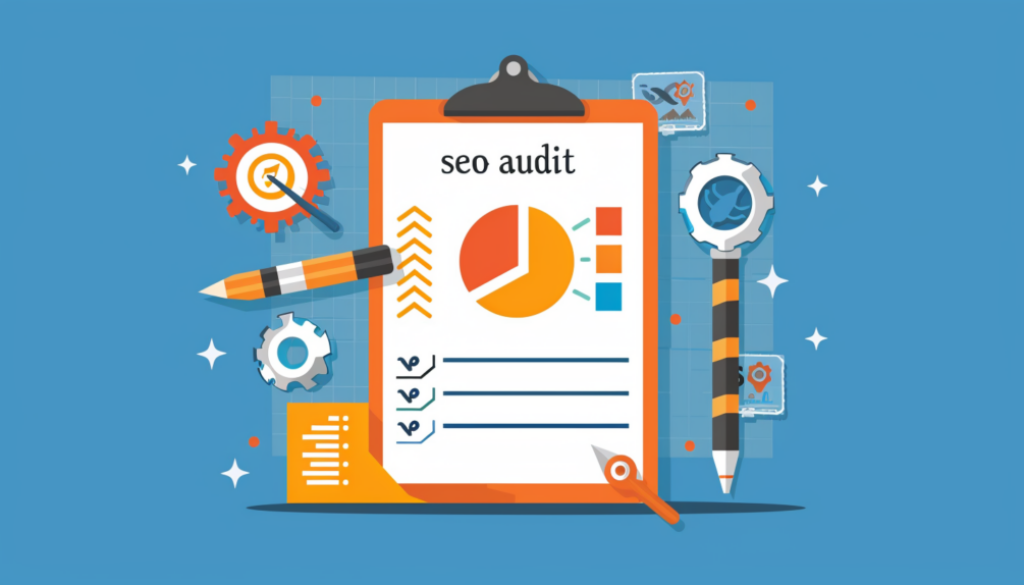15-Step SEO Audit for 2024 Success
As the digital world evolves, staying ahead in the SEO game demands diligence, insight, and a proactive stance. With 2024 on the horizon, it’s crucial to arm yourself with an updated SEO audit checklist that addresses the latest trends, algorithms, and best practices. At Analytive, we understand the significance of a comprehensive SEO audit in enhancing your website’s visibility, user experience, and overall ranking. This guide presents a 15-step SEO audit checklist for 2024, designed to elevate your site’s performance and secure its spot at the top of search engine results.
1. Review Your Site’s Accessibility and Indexability
Begin your audit by ensuring that search engines can crawl and index your site efficiently. Utilize tools like Google Search Console to identify crawl errors, and ensure your robots.txt file and XML sitemap are up-to-date.
2. Conduct a Technical SEO Evaluation
Technical SEO remains a cornerstone of your site’s health. Assess aspects such as site speed, mobile responsiveness, and security (HTTPS). Tools like Google’s PageSpeed Insights and SEMrush can offer valuable insights.
3. Optimize Site Architecture and Navigation
A well-structured site enhances user experience and search engine crawling. Ensure your site hierarchy is logical, with a clear navigation path and optimized internal linking.
4. Audit On-Page SEO Elements
On-page SEO factors like title tags, meta descriptions, and header tags significantly influence your search ranking. Each page should have unique, descriptive titles and meta descriptions that include relevant keywords.
5. Evaluate Content Quality and Relevance
Content is king in the SEO realm. Perform a content audit to ensure your site provides valuable, relevant, and unique content that addresses your target audience’s needs and questions.
6. Assess Keyword Optimization
Keywords play a pivotal role in connecting your content with the right audience. Analyze your keyword strategy to ensure it aligns with current trends and search intents. Tools like Google Keyword Planner and SEMrush can aid in this process.
7. Identify and Fix Broken Links
Broken links hinder user experience and can negatively impact your SEO. Utilize a site audit tool to detect and fix any broken internal or external links.
8. Analyze Backlink Profile
Backlinks are a crucial ranking factor. Use tools like SEMrush or Ahrefs to assess the quality and relevance of your backlink profile, and identify opportunities for improvement or removal of toxic links.
9. Check for Duplicate Content
Duplicate content can dilute your SEO efforts. Tools like Copyscape can help you identify and resolve any instances of content duplication across your site.
10. Review Mobile Friendliness
With mobile-first indexing, ensuring your site is mobile-friendly is non-negotiable. Google’s Mobile-Friendly Test can provide insights into how well your site performs on mobile devices.
11. Monitor Site Speed Across Devices
Site speed influences both user experience and SEO. Use Google PageSpeed Insights to analyze your site’s speed on both desktop and mobile, and implement recommended optimizations.
12. Optimize for Core Web Vitals
Core Web Vitals are set to become even more integral to Google’s ranking factors. Assess your site’s performance in areas like Largest Contentful Paint (LCP), First Input Delay (FID), and Cumulative Layout Shift (CLS).
13. Leverage Schema Markup
Schema markup helps search engines understand your content better, potentially enhancing visibility in search results. Check your site for proper schema implementation using Google’s Structured Data Testing Tool.
14. Evaluate User Experience (UX)
UX impacts SEO directly and indirectly. Assess your site for ease of use, readability, and overall design to ensure it provides a positive user experience.
15. Set Up Regular SEO Audits
SEO is not a set-and-forget strategy. Schedule regular audits to keep up with changes in search engine algorithms, digital marketing trends, and your site’s evolving content.
Conclusion: A Roadmap to SEO Success
This SEO audit checklist for 2024 offers a roadmap to refine your website’s SEO strategy, enhancing its performance, user experience, and ranking. Remember, SEO is a continuous process of evaluation, optimization, and adaptation. By staying informed, leveraging the right tools, and implementing best practices, you can ensure that your site not only meets but exceeds the evolving standards of search engines and user expectations.
At Analytive, we’re committed to helping you navigate the complexities of SEO and digital marketing. Embrace this comprehensive checklist as your guide to mastering the SEO landscape in 2024 and beyond, driving organic traffic, and achieving sustainable growth in the digital age.



